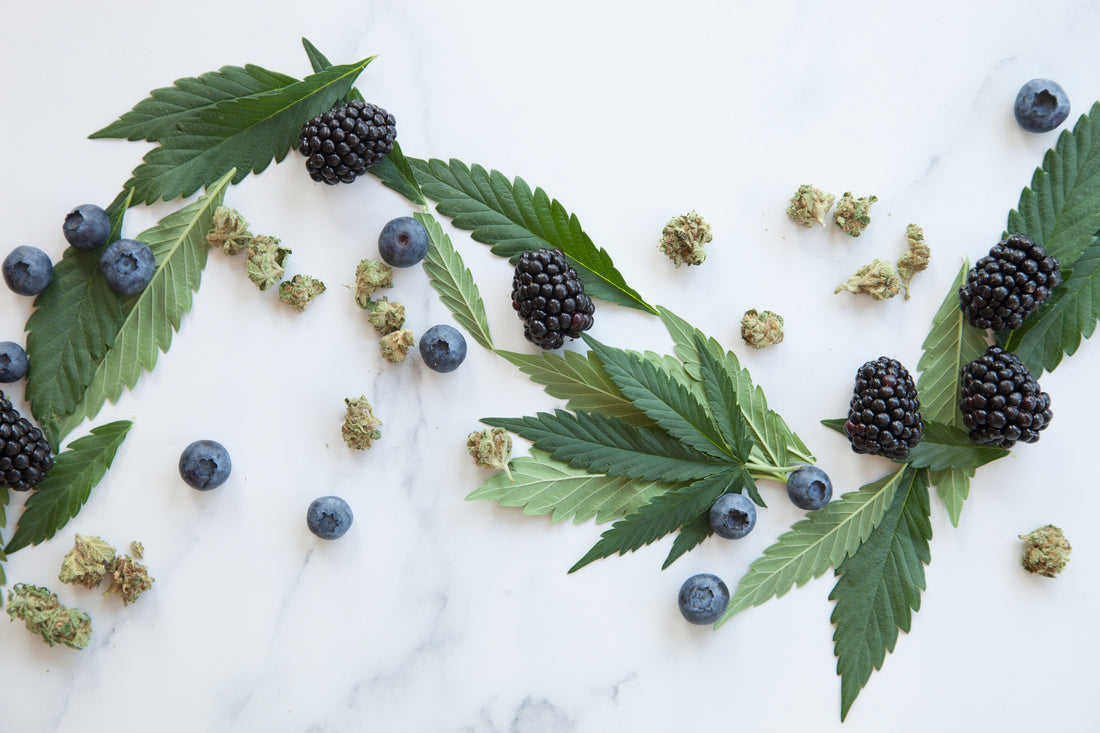
What are Terpenes?
Share
Terpenes are organic compounds produced by a variety of plants, particularly conifers, and some insects. Terpenes create the scents and flavors of cannabis and some believe they may also influence its effects. For example, Linalool supposedly helps induce relaxation and aid in pain management, while Pinene is believed to increase alertness and aid in memory retention.
Terpenes are produced by trichomes, the small "hairy" projectiles that form on the flowers of cannabis. Trichomes make both terpenes and cannabinoids such as THCA and CBDA, which tern into THC and CBD after decarboxylation. Needless to say, trichome development is an important aspect of cannabis cultivation.
The aromas and flavors of cannabis are mostly due to its terpene "profile." Each strain or cultivar will have its own taste and aroma, and the notes found within this signature are often used to identify, label, and even sell different strains or cultivars- for example, diesel, woody, herbal, pine, citrus, skunk, spicy, tropical, etc.
A reliance on scent to determine the quality- and effects- of a particular cultivar has long been in use. Cannabis that has been professionally cultivated and "cured" exhibits a pungent, yet pleasant aroma. Of course, preferences for aroma and flavor are subjective, and different aromas will appeal to different tastes.
Besides the strain itself, growing and harvesting techniques may also affect the terpene profile. Light, soil, and nutrients can all have an impact, as can the timing of harvest, since harvesting too soon may not enable trichomes to develop robust terpene or cannabinoid profiles.
Terpenes and the Entourage Effect
The idea behind the "entourage effect" is that a mix of compounds in combination with one another will have a more potent and synergistic effect than the individual compounds might have alone. It is believed that terpenes and cannabinoids can actually either accentuate or minimize the effects of one another, depending on the compounds present in the cultivar and how one responds to them.
A New Taxonomy
Landrace strains are strains indigenous to a particular area. For example, "Thai" is Sativa from Thailand, "Panama Red" is Sativa from Panama, "Hindu Kush" is an Indica from the Kush Mountain Range on the Afghanistan-Pakistan border, "Durban Poison" is a Sativa from the Durban area of South Africa, and "Acapulco Gold" is a Sativa from Mexico.
Cultivars, on the other hand, are strains cultivated for particular traits unrelated to a particular geographic area and its traditions of planting and harvest. They are not tethered to a geographical area, nor to a genetic seed base recycled from prior crops within an indigenous area. Rather, they are independent of region in that they are individually cultivated with a particular trait or traits in mind.
As cannabis classification becomes more fine-tuned, terms such as "Sativa" and "Indica" could become less relevant since they are used to describe a plant's physical traits and geographic origins. As terpene and cannabinoid profiles become a more standard means of identifying strains and their effects, other means of identification may become less relevant.
Cannabis and Terpene Additives
The terpene profile of a particular cultivar may be altered after production via terpene additives. This process is sometimes referred to as "re-infusion." These terpene additives can be organically or synthetically derived. "Synthetically derived" simply meaning that the terpenes are created in a lab, not isolated from natural origins. Either way, the molecular structure of the added terpene(s) should be the same.
This process has opened up a market for "concentrates," which could be terpene- or cannabinoid-rich "juice" sold as "extracts," "sauce," or "distillate." All are types of cannabis concentrates- however, this doesn't mean the terpenes in them were derived from cannabis, since they can be extracted from other organic sources or even created synthetically. These are the same terpenes, just derived from different sources.
Terpene Effects on Cannabis Users
With some terpenes, the effects of THC are strengthened- say, with Myrcene- while others, such as Pinene, may weaken or "counterbalance" THC's effects. This may explain why a low THC-content strain might feel more intense than strains containing more. Myrcene may also amplify the effects of THC due to its ability to facilitate compounds in crossing the blood-brain barrier.
A Final Important Word on Terpenes
One word of warning about terpenes is that some concentrates, if heated to high temperatures (e.g., vaporizing), can produce toxic byproducts. For example, some terpene mixtures have been observed to form methacrolein and benzene at high temperatures, both of which are known carcinogens. Obviously, more research needs to be done regarding this downside, since it is a dangerous one.
Undoubtedly, the future will see more emphasis on the creation of precision strains via terpene, THC, and cannabinoid manipulation. Indeed, the possibilities for organic, synthetic, and combination blends seem endless.
Written by S.W. Afton
